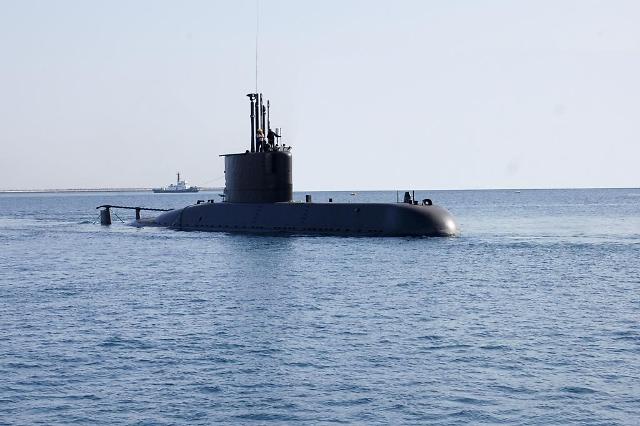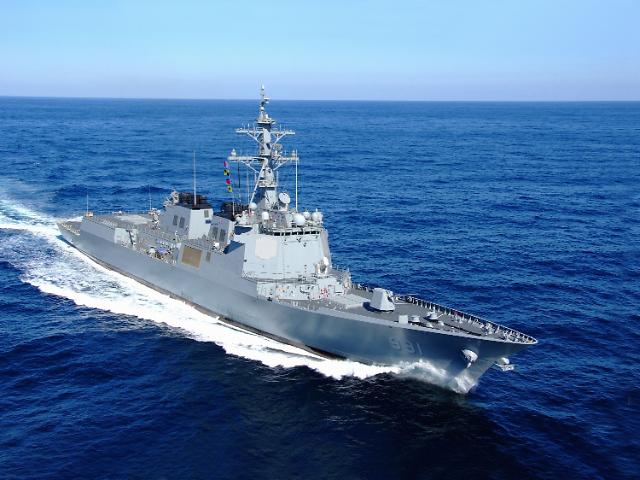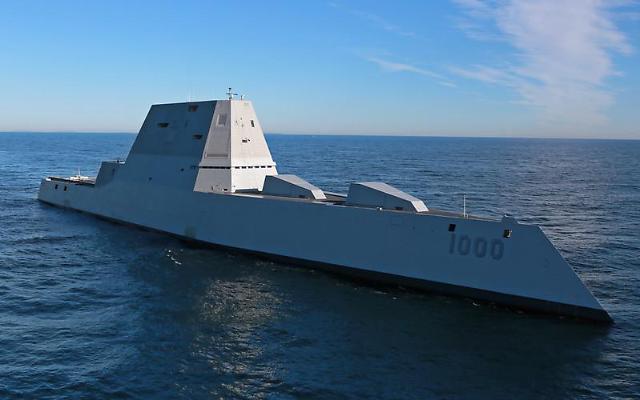
[Courtesy of DSME]
China was the first Asian country to build a nuclear-powered and runs more than 60 nuclear and conventional attack submarines. As part of its push for a blue-water power, Beijing has dramatically expanded its capacity to build nuclear-powered submarines, aircraft carriers and destroyers, while Tokyo has bolstered its naval power amid a growing territorial row with Beijing.
To cope with an ever-growing arms race in Northeast Asia, South Korea has envisioned a smart navy because it's not able to gain a quantitative advantage over its neighboring countries. South Korea's naval buildup program is basically aimed at keeping North Korea in check. However, military leaders now openly talk about a naval fleet covering the ocean beyond coastal waters, based on accumulated technical skills in the fields of advanced missiles, warships and electronic equipment.
South Korea's defense buildup program unveiled in August called for the development of a 30,000-ton light aircraft carrier capable of carrying vertical landing combat jets and a 4,000-ton submarine. The type of engine was not fixed, opening the way for the construction of a submarine powered by a nuclear reactor. The idea of developing nuclear submarines dates back to 2007 when the test launch of North Korea's submarine-launched ballistic missiles (SLBMs) raised security concerns.
South Korea has built 1,200-ton and 1,800-ton diesel-electric submarines with technical help from Germany’s Howaldtswerke-Deutsche Werft. Through the third phase, submarines of 3,000 tons or more are to be built. The first 3,000-ton submarine, unveiled in 2018, can sail at a maximum speed of 37 kilometers (23 miles) per hour with about 50 people aboard. It can operate underwater for 20 days without surfacing. A second 3,000-ton submarine was launched on November 10. The latest one was 83.3 meters long and can fire ballistic missiles.
"In the near future, our navy will be reborn as an advanced ocean power with a Korean-style next-generation destroyer and a 4,000-ton submarine as well as a light aircraft carrier that will be its core strength," Defense Minister Suh Wook said in a ceremony to launch the country's 20th submarine at the shipyard run by Daewoo Shipbuilding & Marine Engineering (DSME), the main builder of South Korean submarines, in Geoje.
The ceremony came after Japan launched the 22nd submarine named Taigei (big whale) on October 14. The 3,000-ton diesel-electric attack submarine equipped with lithium-ion batteries as a power source is 84 meters long. Japan runs nine 2,750-ton Oyashio-class submarines and 11 2,950-ton Soryu-class warships. A 12th Soryu-class submarine will be commissioned in 2021.
Lithium-ion batteries are more power-efficient, take up less space and improve underwater navigation capability and high-speed maneuvering compared to conventional lead-acid batteries. Submarines using lead-acid batteries surface regularly to vent poisonous fumes created in the processes of cooling and charging.

[Courtesy of DAPA]
With the development of lithium-ion batteries for submarines, South Korea can strengthen submarine performance and secure competitiveness in large-capacity lithium-ion battery technology, Cho Dong-jin, who is in charge of DAPA's submarine development, said in September."We expect to gain an edge in submarine exports in the future, considering the global competitiveness of our lithium-ion batteries."
In April 2019, Indonesia agreed to buy three more 1,400-ton submarines from South Korea in a $1.02 billion deal. It was the second submarine contract between the two countries which have maintained close military ties. DSME has already assembled three 1,400-ton submarines for Indonesia under a $1.07 billion contract in 2011.
Under a mutual defense pact, the United States has closely monitored South Korean defense programs, especially in the fields of strategic weapons such as missiles and nuclear arsenal. Seoul was allowed to deploy missiles that can fly for up to 800 km with no limit in its payload, but Washington maintains a stubborn nuclear policy, refusing to revise a 2015 accord that has effectively restricted the development of reprocessing facilities to acquire enriched uranium as fuel.
South Korea has been on the watch by the nonproliferation community because of its covert nuclear program in the 1970s. Experts believe South Korea's nuclear armament will be a matter of time, probably faster than any other countries, if its security and survival are in serious danger, or when the U.S. security umbrella is lifted.
Copyright ⓒ Aju Press All rights reserved.




View more comments